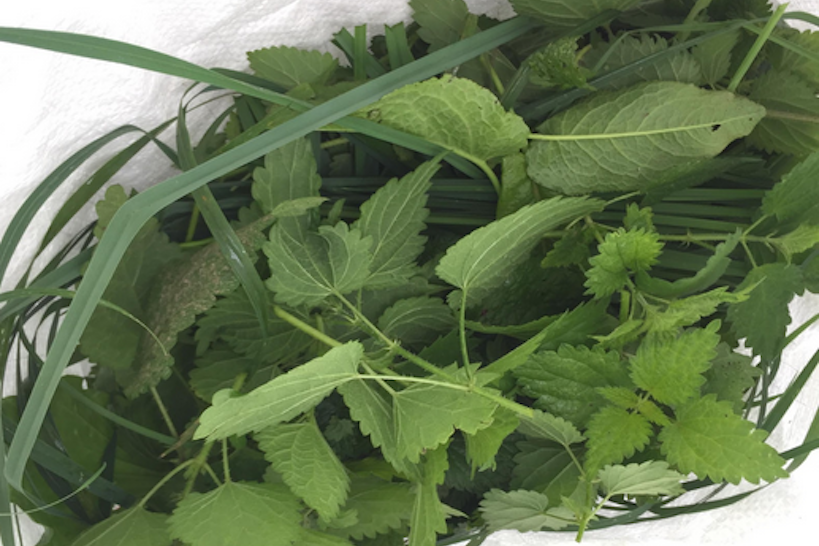By Gemma Taylor
What is FPJ, FFJ, KNF?
If you have an interest in organic growing, permaculture or living soil, chances are you’ve glanced upon these strange acronyms at some point over the last few years. FPJ (fermented plant juice) and FFJ (fermented fruit juice) are just two of the basic elements of KNF (Korean natural farming). KNF, FPJ, FFJ, LABS (there’s quite a few more) are really nothing to be daunted by, but instead should sing to the hearts of those looking to create a natural closed loop system for their gardens, once you delve a little deeper.
In principle KNF is about creating fertile soils, nurturing plant development and increasing yields, without the use of “modern” agricultural methods and/or products. This is all achieved by harnessing micro-organisms from not just the growers environment but also local plant materials. The fantastic thing about KNF principles are that they are accessible to all. KNF is cheap, if not in most cases free, if you have the time and energy.
A very brief History of KNF
Cho Han Kyu or Master Cho developed the KNF method during the 1960s from when he spent time working on his family’s farm and then a three-year period of study in Japan as an agricultural research student. When Cho returned to Korea he worked his newly found natural farming knowledge into practice and combined this with his existing Korean natural farming methods to really develop the KNF principles.
How I got into KNF
I have been on my own personal living soil journey for just over 18 months now and for me KNF came into my life at a greatly synchronised time. After having dedicated 12 months of learning to soil, living soil systems and furthering my organic growing knowledge, I was looking for a way to enhance my soils’ microbial power. Since I had crafted my own living soil system using locally foraged amendments – and I did so with a real low cost, DIY attitude – KNF really ticked all the boxes for me.
Once you begin your living soil journey, information finds its way to you on a beautifully intertwined stream and much like any joyous, passionate learning experience you open doors. All of these unique growing principles fit together so perfectly because they all harness the same core ideology: provide and care for the soil and that in turn will do the same for your plants.
Bud & Tender CBD Oil – Use UKCSC10 to get 10% off
How to make your own FPJ and FFJ
To do this you’ll need a few things: an alarm clock, a glass jar, kitchen scales, brown sugar or jaggery paper.
The whole idea of FPJ is to capture beneficial microorganisms and growth hormones among an array of other things. When done properly FPJ should contain plant hormones, microorganisms, primary and secondary plant nutrients, lactic acid and yeast. Late spring is a great time to harvest plant material as this is when things are really beginning to come into their own but you can still harvest material all year round.
You’re looking for fast growing, big, healthy plants. I chose Plantain (Plantago major), Nettles (Urtica dioica) and Ryegrass (Lolium perenne); I harvested around two big handfuls of each. Probably the most important factor when harvesting plant material is at what time of day you do it; the absolute perfect time to harvest for the maximum amount of beneficial microorganisms is before sunrise. You want that plant material right before the sun hits those leaves and the numbers of microorganisms dwindle away.
To prepare your freshly harvested material, roughly chop or rip your plant material into small pieces. I’ve found anything from around 2-5cm pieces work great. Once everything is chopped you’ll need to weigh out all of your plant material. Once weighed you’ll need to add an equal amount of brown sugar or jaggery to your plant material. There are a few different variations on this method but 1:1 has always worked well for me.
Add everything into your jar and give it a mix, you’re looking to get all of the plant material mixed with the sugar or jaggery but taking care not to crush any of the material. Once everything is mixed together you can go ahead and add around 1-2cm of additional sugar on top to effectively form a lid. Then using paper, craft yourself a lid to your jar and use either an elastic band or string to hold the lid in place. Using paper is really important as it helps the jar breathe. This will avoid any contamination and release of gases from the fermentation process. Once complete, store the jar somewhere out of direct sunlight, preferably dark.
The time it takes for the FPJ or FFJ to be ready varies, but generally in favourable conditions you’re looking at 7-14 days. You’ll know when the process is complete as the smell will be distinctly alcoholic. Once you’re happy the process is complete, you simply drain out the liquid and pour again into a glass or ceramic bottle or jar with another paper lid. If stored in the same conditions it will happily keep for 12 months.
To make FFJ, the same technique applies and I’ve had great success with banana peels but you can use absolutely any fruit.
The application rates I use for both foliar and soil application is 0.5-1ml per litre of water. Some experimentation will be required as different plants prefer different applications but most plants benefit from FPJ and FFJ during vegetative growth and very early flowering.




